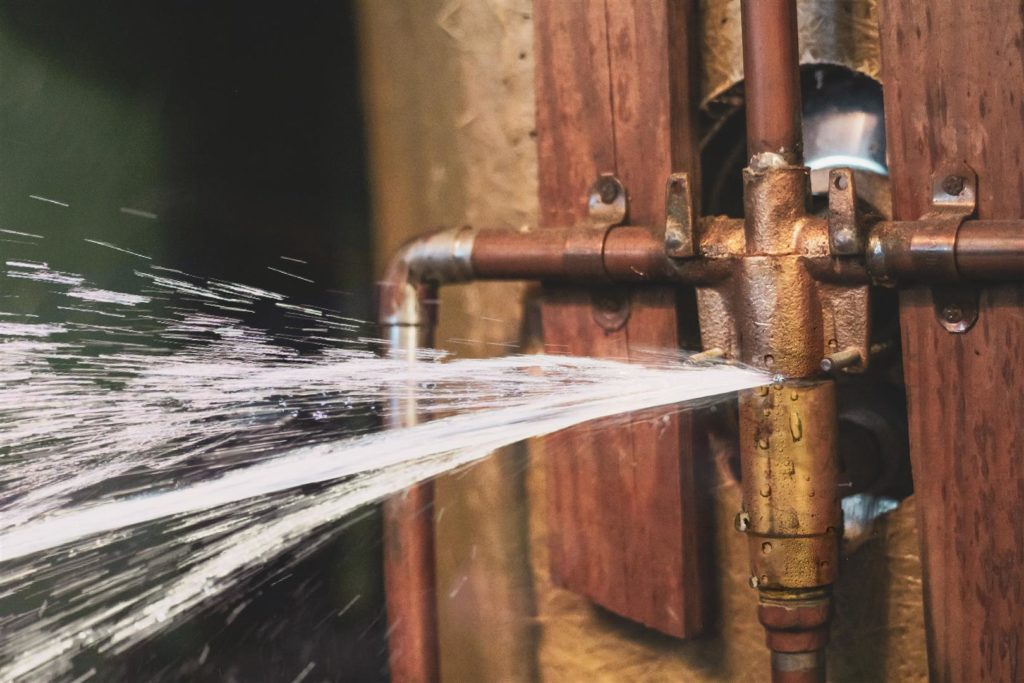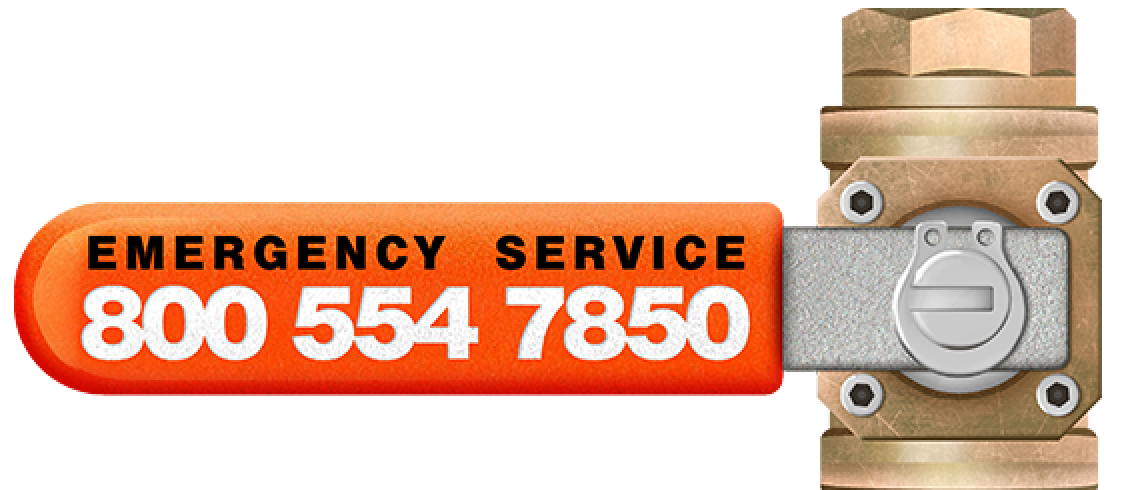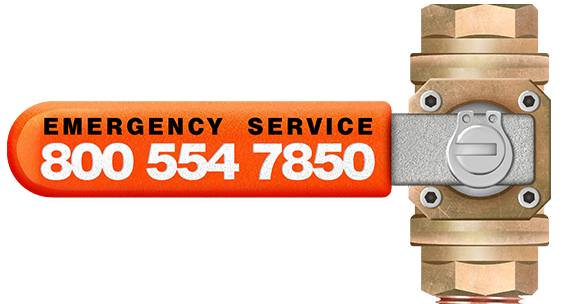Slow and hidden water leaks in the bathroom are often even more damaging than a suddenly broken pipe. Minor water leaks can cause more severe damage over an extended period of time. Quite often the source of water damage isn’t even a leak, but excess moisture that doesn’t dry quickly enough.
The first step to controlling water damage in a bathroom is to find the source of the water problem, be it humidity, leaking, or water intrusion where it doesn’t belong. In the event of sudden burst pipes and gushing water, the water supply to the home will need to be shut off. Home water controls are usually located just outside the home.
Water damage can be devastating, and the bathroom is the one room in any home, and most businesses, where its purpose is so reliant on water. Catching it early, or preventing it can prevent a lot of troubles.
Sources of Water Damage
The most common sources of water damage to the bathroom include:
- Toilets
- Sinks Leaking
- Bathtubs/Showers
- Faulty Plumbing
- Excessive Steam
- Cracked or Missing Caulk
- Exterior Roof Damage
What Water Damage Looks Like in a Bathroom
Many times, bathroom water damage takes the form of “softened” walls, loose tiles, a humidity level above 50%, or visible mold damage. High humidity levels and excessive steam from hot showers require ventilation to dry the area. So many homes have closet access directly from the bathroom as well causing steam, humidity, and condensation issues to affect those areas as well.
In two-story homes, a flood in the upstairs bathroom can spread downstairs and throughout the home.
Toilets
Toilets are known to leak, run, and overflow. With high humidity, they can also sweat. When you find water on the floor of the bathroom and there is no tub or shower, often the problem is a leak in the toilet.
Inspect the water supply in – and a connection to the sewer system out.
Clear water could come from the water supply, the tank where it sets onto the bowl, or an overflow of the tank. A plumber will be able to remedy the problem. It could be as simple as installing fresh seals to replacing the toilet. However severe the solution, allowing the water leak to remain can cause serious damage.
If the connection to the sewer is the problem, or a clog in the pipes, it is a health issue and you need to address this with no delay. Your plumber can help.
Clean water or sewer, a leaking toilet can cause serious damage if water is allowed to sit. Tiles can come loose and subfloors can rot. Your problems have only just begun.
Sinks Leaking
Like toilets, you have a water source and a drain to the sewer. The faucets are often a source of leaking and are relatively easy and inexpensive to fix or replace.
Caulking around the sink that is cracked, peeling, or missing altogether will allow water to seep under the sinks edge and compromise the cabinet.
Under the cabinet the drain should be tight and dry. If it is not, fix it. The dark cabinet, with moisture and no airflow is perfect for helping mold to grow, especially in Florida’s warm and humid climate.
Bathtubs and Showers
Bathtubs and showers are all about getting wet. A nice hot shower can be very relaxing and enjoyable. But it could also be the jump start to your day. For a lot of people, the shower is the first thing a person does to prepare for work and school. For many, mornings are rushed for the whole family and water escaping the shower curtain is the last thing on anyone’s mind. The result can be water damage. Without proper ventilation and without a quick dry, water damage can penetrate paint and drywall and find it’s way behind the walls.
Like your sinks and toilets, there should be caulking around the edges to keep water from seeping into the walls, behind the shower enclosures, and under your tub. If it is showing signs of wear, cracking, discoloration, deterioration, pealing, or missing altogether, you may already have water seeping in where it doesn’t belong.
Water damage behind the walls of your shower or tub could present big problems later or could be growing mold without you knowing.
In addition to addressing caulk, faucets and showerheads should be secure and not leaking. If they do leak or drip, at least they are dripping where the water drains. But such leaks and drips indicate a problem is developing that could cause greater damage like a showerhead that sprays water outside the tub or enclosure.
If you’re not able to tackle these problems yourself, any plumber will be able to solve them.
Faulty Plumbing
With faulty plumbing, it could be obvious just looking at it with water dripping, spraying, or collecting in places it shouldn’t. But even more dangerous is when it’s the plumbing behind the walls where you cannot see it. In that case, you will probably not notice until a ceiling below shows signs of water damage or the walls or cabinet feels ‘mushy’.
Water damage in the bathroom like this is especially expensive because it doesn’t affect just the bathroom. It permeates walls and floors and affects other rooms. The more rooms affected the greater the cost of repair in money and disruption to your life.

If you observe this sort of sign of water damage, address it immediately! A water mitigation professional can use a moisture meter to get a sense of how saturated your wall material is and can help you resolve the problem.
The pipe that you see leaking or spraying water is bad. The one you don’t see is even worse.
Excessive Steam
Everyone loves a hot shower. Some take a “Navy shower” but most of us will take enough time for the mirror to fog up. If you live in a home with a number of people taking back to back hot showers, you are introducing a lot of steam into the bathroom, and that can take a toll.
Water damage from steam often comes in the form of mold growth. Mold can compromise the integrity of your home’s building materials.
But beyond mold, the wood and drywall in your bathroom will start or absorb the water in the room if it doesn’t vent out. This absorption can cause swelling if too saturated, or dry rot if not too saturated, but never fully drying.
Make sure your bathroom vent actually vents to the outside and isn’t just a fan.
Restoring a Water Damaged Bathroom
A full inspection of your bathroom’s walls, tiles, and plumbing will be required to uncover all seen and unseen water damage in the bathroom. Unseen water damage is often uncovered when damaged walls and cabinets are removed. Of course, that too, once exposed, will also need to be addressed. Oftentimes that previously unseen damage is mold, but it can just as easily be rotted wood.
24/7 Emergency Bathroom Plumber Service
Our Emergency plumber service includes stopping major water leaks and faulty plumbing. We’ll bring a qualified plumber to the scene anytime day or night, 24/7 in Orlando, and throughout Central Florida.
Call us at (800) 554-7850 if you’re experiencing an emergency water leak in your bathroom or home.
Construemax will work with all major homeowners’ insurance.







